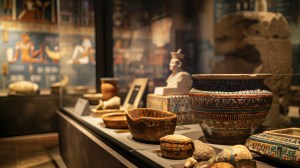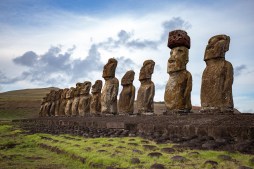Unveiling the Truth: Which Pyramids Precede Ancient Egypt?
The pyramids of Egypt are among the most iconic structures in the world, symbolizing ancient civilization and architectural prowess. However, recent studies and archaeological discoveries have led to intriguing questions about whether there are older pyramids or megalithic structures elsewhere that predate those of Egypt. This article explores various global megaliths that challenge conventional timelines and offer a broader perspective on ancient pyramid construction.
The Mystery of Pyramids Around the World
While the Great Pyramid of Giza is often considered a pinnacle of engineering from around 2580-2560 BC, there are other structures around the world that suggest a longer history of pyramid-building. Notably, sites such as Caral in Peru and Göbekli Tepe in Turkey have revealed complex architecture that predates Egyptian pyramids by thousands of years, prompting researchers to rethink our understanding of early human societies and their capabilities.

Caral: The Oldest Civilization in America
Discovered in 1905, Caral is located in modern-day Peru and is recognized as one of the oldest urban centers in the Americas. Radiocarbon dating indicates that its construction dates back to around 3000 BC. The site features several large platform mounds resembling pyramids, known as ‘piramides,’ constructed with intricate planning and organization. These findings suggest advanced societal structure long before Egyptian influences were established.
Göbekli Tepe: A Prehistoric Temple Complex
Situated in southeastern Turkey, Göbekli Tepe dates back to approximately 9600 BC – well before Stonehenge or any Egyptian pyramids were built. Its massive stone pillars arranged in circular formations indicate it was likely used for ceremonial purposes rather than residential living. This site has been pivotal for understanding human social organization during prehistoric times, revealing that complex societies existed much earlier than previously thought.
Mesoamerican Pyramids: A Different Tradition
In Mesoamerica, civilizations like the Maya and Aztecs constructed impressive pyramidal structures such as those found at Teotihuacan (around 100 AD) and Tikal (around 700 AD). While these dates fall within known history after Egypt’s pyramids were built, some argue that earlier cultures may have influenced these designs significantly or even had their primitive forms beforehand—a concept worth exploring further within archaeological contexts.
Implications for Our Understanding of Ancient Civilizations
The existence of megaliths like Caral and Göbekli Tepe urges us to reconsider how we view technological advancement among ancient civilizations globally. It showcases a rich tapestry where knowledge sharing across cultures might have occurred long before recorded history began—potentially revolutionizing our understanding of cultural evolution across continents.
In conclusion, while traditional narratives often place Egyptian pyramids at the forefront of ancient architectural achievements, evidence points toward sophisticated pyramid-like constructions existing elsewhere much earlier. These findings inspire curiosity about prehistoric human ingenuity worldwide; thus challenging us to continue exploring our planet’s historical mysteries.
This text was generated using a large language model, and select text has been reviewed and moderated for purposes such as readability.











